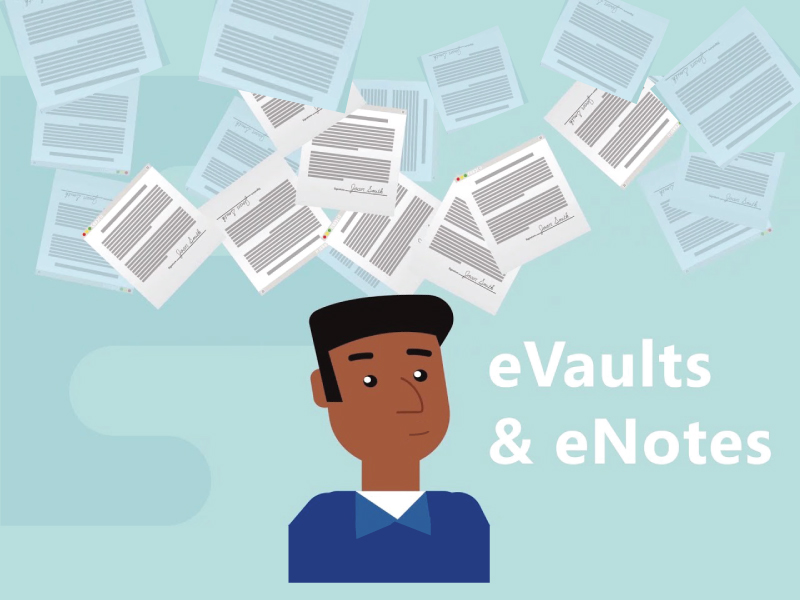What does a vault have to do with an eClosing? Plenty. As eClosings become more common, fundamental elements of the mortgage process will change. For example, instead of a paper promissory note, you may have an eNote and eVault. The note is one of the key lender documents within a loan package that borrowers sign at closing. It’s the borrower’s written promise to repay the loan within the specified term. The note is also very important to investors who buy and sell them on the secondary market. The note plays an important part in a mortgage backed security. Think of an eNote as the electronic version of a paper note. The eNote gets electronically signed instead of wet signed at closing. You must be able to identify the original version of the eNote. Think of the electronic version as a PDF. There could be infinite versions of it floating around. How do investors know the version they are buying is the original? To solve this, the mortgage industry got smart and did two things:
- They created the MERS eRegistry, the legal system of record for identifying the controller and location of the authoritative copy of the eNote.
- Created standards for how to store eNotes in something called an eVault.
eVaults are technology platforms that are built to support the handling, status, and storage of eNotes. They always have integrations to the MERS eRegistry and often have integrations to other eVaults and trading partners. The MERS eRegistry is the librarian of the eNote world. It tracks who controls each eNote and in which eVault it is stored. When a lender creates an eNote, they register it with the MERS eRegistry which notifies the librarian of the controller and location of the eNote. If you are exposed to an eNote, now you know what a vault has to do with it.
For more information on eClosings, visit www.republictitle.com/evolve
Click here to go to our YouTube page to see more of our helpful videos.

